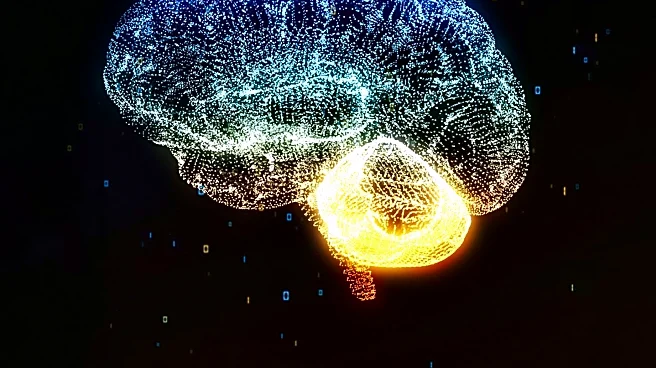What's Happening?
Recent research published in Biological Psychiatry: Cognitive Neuroscience and Neuroimaging has identified early and stable disruptions in the limbic system of children and adolescents with attention-deficit/hyperactivity
disorder (ADHD). The study involved 169 participants aged 9 to 14, including 72 diagnosed with ADHD. Using advanced diffusion MRI scans, researchers tracked changes in brain white matter over time, focusing on the limbic system, which regulates emotion and integrates emotional signals with cognitive processes. The study found that children with ADHD showed lower kurtosis anisotropy in the cingulum bundles, indicating less organized white matter. These differences were consistent across multiple time points, suggesting they are stable features of ADHD rather than temporary fluctuations.
Why It's Important?
The findings are significant as they provide insight into the neurodevelopmental aspects of ADHD, particularly how emotional and cognitive brain circuits are wired during development. Understanding these early and stable brain differences can help in conceptualizing ADHD as a disorder affecting brain connectivity. This research highlights the importance of the limbic system in emotional regulation and impulse control, areas where individuals with ADHD often face challenges. By identifying these differences, the study contributes to a broader understanding of ADHD as a dimensional condition, which could influence future diagnostic and therapeutic approaches.
What's Next?
The study suggests the need for further research to track developmental changes across the lifespan, extending into late adolescence and early adulthood. Researchers aim to integrate imaging with genetic and behavioral data to build a comprehensive lifespan model of ADHD. This could help clinicians understand why symptoms persist or remit over time, potentially leading to more personalized treatment strategies. Additionally, expanding the age range studied could clarify whether the observed differences persist, worsen, or diminish as individuals age.
Beyond the Headlines
The study underscores the complexity of ADHD, suggesting that it involves distributed, small-scale differences across multiple brain systems rather than a single abnormality. These findings may contribute to a larger developmental picture that combines genetics, environment, and experience. The research also highlights the challenges in defining the limbic system anatomically, which can complicate comparisons across studies. Addressing these challenges could improve the understanding of ADHD and its impact on brain development.











